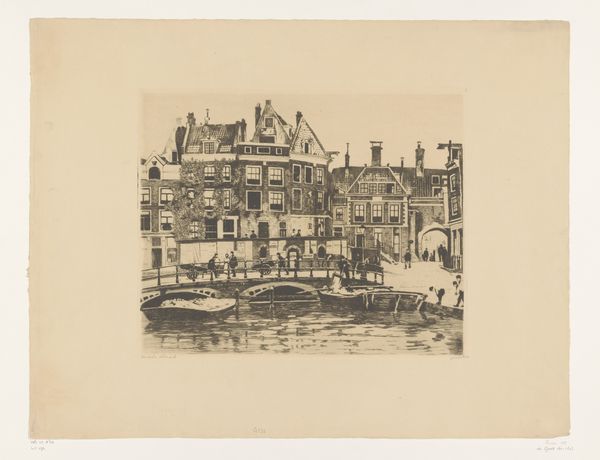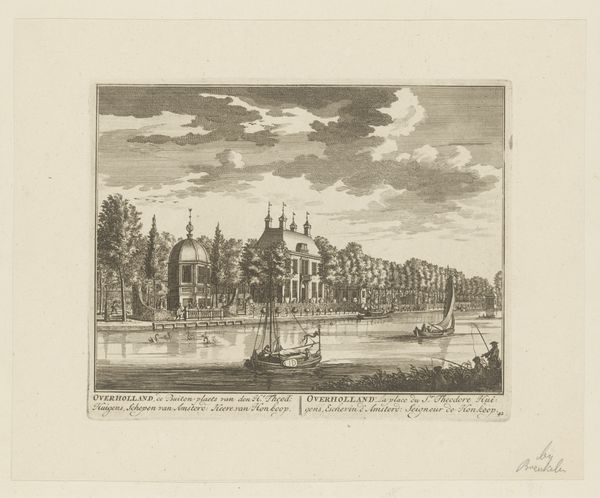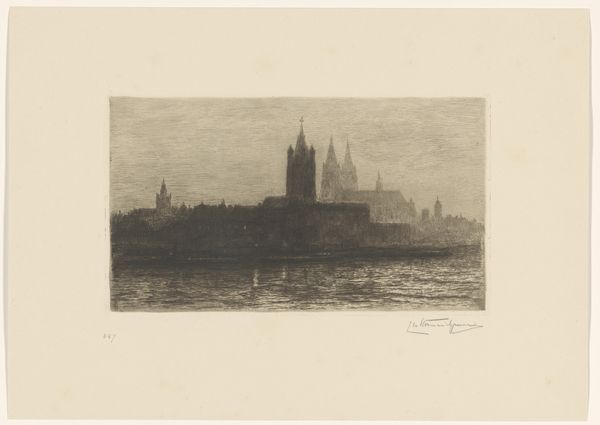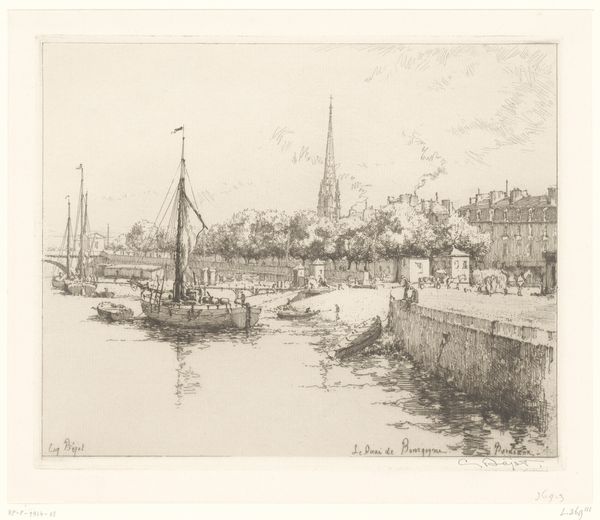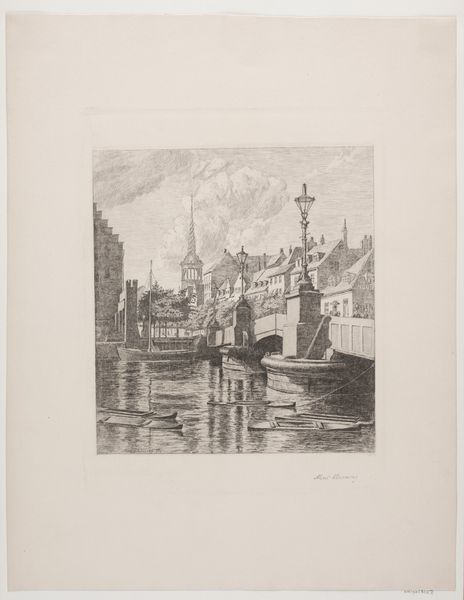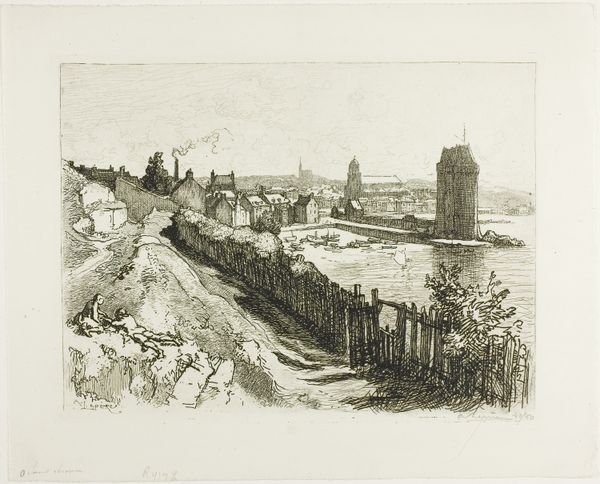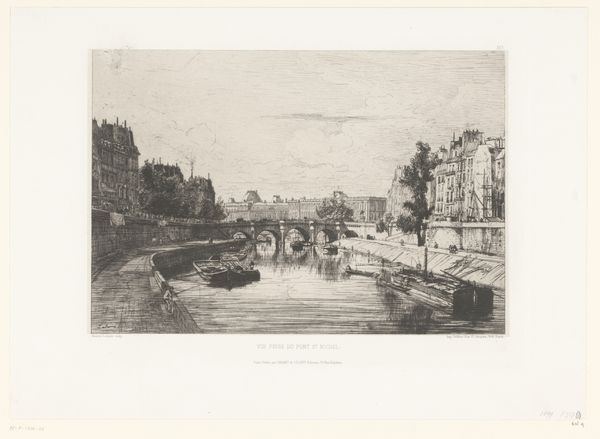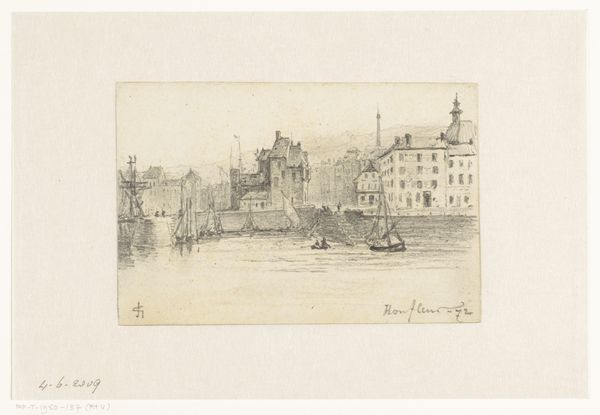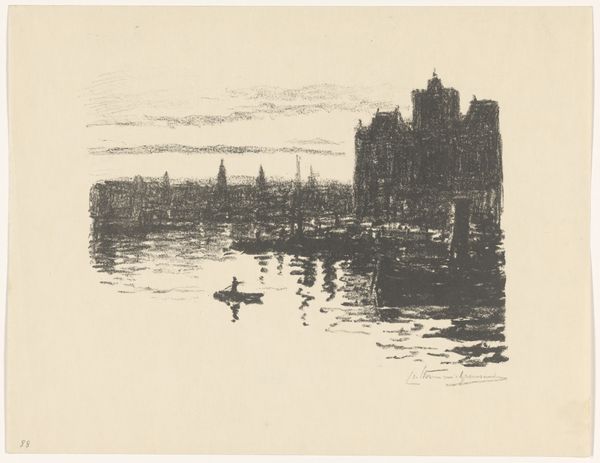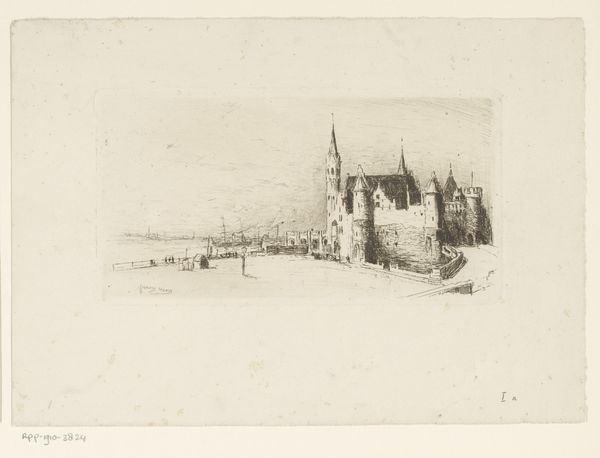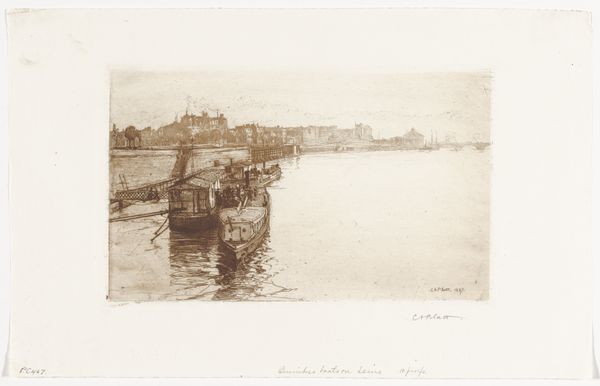
Dimensions: height 228 mm, width 285 mm
Copyright: Rijks Museum: Open Domain
Editor: This is Eugène Bejot’s 1930 etching, "Haven voor Dieppe," or "Port of Dieppe." It feels almost photographic, yet dreamlike in its soft, muted tones. What do you see in this piece, especially considering the visual symbols at play? Curator: Well, the church towers immediately dominate the skyline, acting as anchors – both visually and spiritually. Can you feel how they convey stability, permanence? In contrast, look at the water; what emotions does it invoke for you? Editor: I see what you mean about the church. And the water makes me feel that sense of movement, change. Like life, it’s constantly flowing and reflecting everything around it. The boats add to that, too. Curator: Exactly! And notice how the artist positions the church in the very center, suggesting an axis mundi, the symbolic center of the world, around which this community revolves. But what kind of feeling do the reflections on the water generate in your perception? Editor: An overwhelming sensation. The doubling creates depth, and almost suggests hidden or unconscious parts of the city. It feels as though you're also looking into a different, veiled dimension of Dieppe. It gives the harbor so much more feeling, more impact! Curator: Precisely. Those visual echoes ripple outward from the heart of the town, implying memory and time layered upon the present moment. And look how art nouveau has also been employed to suggest movement with every tiny line! Editor: So, beyond just being a cityscape, it uses those visual symbols to suggest something about Dieppe's history and identity? I hadn't really considered the reflections that way before. Curator: Indeed. Art often speaks in a visual language beyond the immediately visible. Today, our image of cultural continuity can gain from appreciating the weight of even such quiet visual metaphors.
Comments
No comments
Be the first to comment and join the conversation on the ultimate creative platform.
